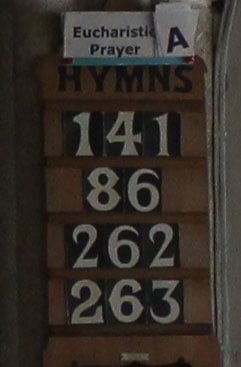Sony Alpha A3000 review
-
-
Written by Ken McMahon
Quality
Sony Alpha A3000 vs Canon EOS T5 / 1200D vs Nikon D3300
To compare real-life performance I shot this scene with the Sony A3000, the Canon EOS T5 / 1200D, and the Nikon D3300 within a few moments of each other using their best quality JPEG settings.
All three cameras were fitted with their respective 18-55mm f3.5-5.6 kit zooms and were adjusted to provide the same vertical angle of view.
For this test all three cameras were mounted on a tripod and set to Aperture Priority exposure mode. Image stabilisation was turned off and the camera settings were otherwise left on the defaults.
The image above was taken with the Sony A3000. I’d previously determined that the best results with the A3000 were produced with the lens set to f5.6 so I set Aperture Priority mode and selected f5.6 at the A3000’s base 100 ISO sensitivity setting where it metered a shutter speed of 1/800. The Canon T5 / 1200D and Nikon D3300 were also set to their base 100 ISO sensitivity settings and in Aperture Priority mode with f5.6 selected they too metered the same 1/800 shutter speed. As usual the 100 percent crops below are taken from the areas marked in red above.
The Sony A3000 gets off to a pretty poor start with a first crop from close to the edge of the frame that’s all blur and fuzz. But glance down the row of crops and it’s clear that this is an outlier, the 18-55mm zoom quality at the edge isn’t doing justice to the sensor. The second crop is much better with sharper edges and a lot more fine detail visible. Enough detail to be able to tell the time on the clock – just about. It still looks a little bit on the soft side, though, and it will be interesting to see how much more detail, if any, is visible in the RAW crops on the next page.
The third crop also shows a good level of detail with a well defined white cylinder of a lighthouse with the lamphouse clearly visible atop it. The crop from the far right edge of the frame is actually much better than the one from the left edge with none of the blurring and fuzziness. It’s slightly softer than the crops from the middle of the frame, but there’s a good level of detail in the chimney pots and roof tiles.
Note that here we’re comparing crops from three APS-C sized sensors with different resolutions – 20.1, 18 and 24.2 Megapixels as you go from left to right for the Sony A3000, Canon T5 / 1200D and Nikon D3300 respectively. So the Sony crops show a slightly smaller area with bigger detail than the Canon ones, and Nikon crops show the smallest area with largest detail.
Compared with the crops from the Canon T5 / 1200D, with the obvious exception of the first one, the Sony A3000 crops don’t look that disimilar. In fact the main difference is the usual colder white balance of the Sony crops, but beyond that there’s a couple of other small variations. The Sony crops don’t suffer from chromatic aberration like the Canon ones do and I think there’s also a tiny bit more detail in them, particularly the last two. It’s pretty marginal, but in the third crop the lighthouse and island are sharper as is the foregound detail. The final crop is also sharper with a little more detail, particularly in the top half – notice the aerials.
The Nikon crops not only show larger detail, but look cleaner and sharper to me than the A3000 crops. The only exception here is the final crop where the A3000 has the edge. It’s worth noting that some of the D3300’s superior performance will be due to the absence of a low pass optical filter in front of its sensor.
To see what benefit shooting in RAW can have now take a look at my Sony A3000 RAW quality page. Or to see how these models compare at higher sensitivities check out my Sony A3000 noise results.
Sony A3000 | Canon EOS T5 / 1200D | Nikon D3300 | ||
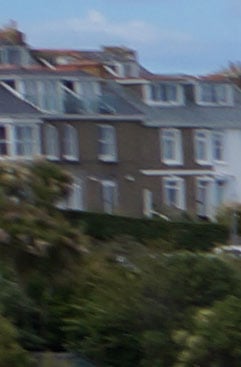 |  |  | ||
f5.6, 100 ISO | f5.6, 100 ISO | f5.6, 100 ISO | ||
 |  |  | ||
f5.6, 100 ISO | f5.6, 100 ISO | f5.6, 100 ISO | ||
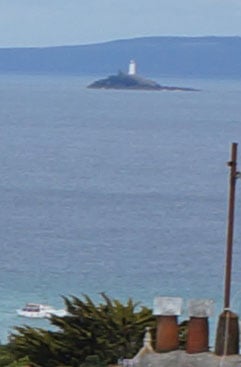 |  |  | ||
f5.6, 100 ISO | f5.6, 100 ISO | f5.6, 100 ISO | ||
 |  |  | ||
f5.6, 100 ISO | f5.6, 100 ISO | f5.6, 100 ISO |
Sony Alpha A3000 vs Canon EOS T5 / 1200D vs Nikon D3300 RAW quality
To compare real-life RAW performance shot this scene with the Sony A3000, the Canon EOS T5 / 1200D, and the Nikon D3300 within a few moments of each other using their RAW +JPEG settings.
All three cameras were fitted with their respective 18-55mm f3.5-5.6 kit zooms and were adjusted to provide the same vertical angle of view.
For this test all three cameras were mounted on a tripod and set to Aperture Priority exposure mode. Image stabilisation was turned off and the camera settings were otherwise left on the defaults.
The image above was taken with the Sony A3000. I’d previously determined that the best results with the A3000 were produced with the lens set to f5.6 so I set Aperture Priority mode and selected f5.6 at the A3000’s base 100 ISO sensitivity setting where it metered a shutter speed of 1/800. The Canon T5 / 1200D and Nikon D3300 were also set to their base 100 ISO sensitivity settings and in Aperture Priority mode with f5.6 selected they too metered the same 1/800 shutter speed. As usual the 100 percent crops below are taken from the areas marked in red above.
In my comparison below you can see how the Sony A3000 compares against the Canon T5 / 1200D and Nikon D3300 when the cameras are set to RAW and their images processed with Adobe Camera RAW using identical settings: Sharpening at 50 / 0.5 / 36 / 10, Luminance and Colour Noise Reduction both set to zero, the White Balance set to 5800K / +6 tint, and the Process to 2012 with the Adobe Standard profile. The high degree of sharpening with a small radius enhances the finest details without causing undesirable artefacts, while the zero noise reduction unveils what’s really going on behind the scenes.
Ignoring the first crop from the A3000 that’s marred by the optical quality of the lens sample, what’s interesting about these RAW crops is how closely matched the three models are in terms of the amount of detail visible and edge sharpness. Comparing the second row of crops, aside from the different sized detail there really is very little to differentiate them. The same can be said for the lighthouse crops in the third row; in the final row from close to the right edge of the frame about the only thing that stands out is the chromatic aberration on the Canon T5 / 1200D crop in the middle.
So there are minor differences here and there but in terms of RAW image quality the sensor output of the three models here is so similar it’s hard to tell the difference, even at 100 percent viewing sizes. It’s worth pointing out again though, with the Canon T5 / 1200D you’re getting 18 Megapixels, 20 from the Sony A3000 and 24 Megapixels from the Nikon D3300.
Now to see how these models compare at higher sensitivities check out my Sony A3000 noise results.
Sony A3000 RAW | Canon EOS T5 / 1200D RAW | Nikon D3300 RAW | ||
 |  |  | ||
f5.6, 100 ISO | f5.6, 100 ISO | f5.6, 100 ISO | ||
 |  |  | ||
f5.6, 100 ISO | f5.6, 100 ISO | f5.6, 100 ISO | ||
 | 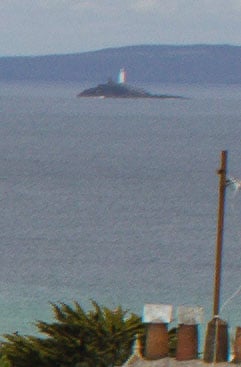 | 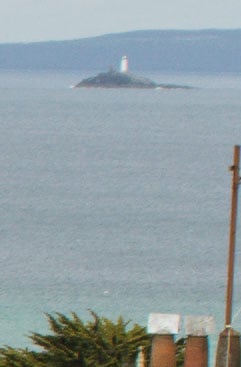 | ||
f5.6, 100 ISO | f5.6, 100 ISO | f5.6, 100 ISO | ||
 |  |  | ||
f5.6, 100 ISO | f5.6, 100 ISO | f5.6, 100 ISO |
Sony Alpha A3000 vs Canon EOS T5 / 1200D vs Nikon D3300 RAW noise

To compare RAW noise levels under real-life conditions, I shot this scene with the Sony A3000, the Canon EOS T5 / 1200D, and the Nikon D3300 within a few moments of each other using their RAW setting at each of their ISO sensitivity settings.
All three cameras were fitted with their respective 18-55mm f3.5-5.6 kit zooms and were adjusted to provide the same vertical angle of view.
For this test all three cameras were mounted on a tripod and image stabilisation was turned off.
The image above was taken with the Sony A3000. The A3000 was set to Aperture Priority mode and at its base 100 ISO sensitivity setting with the aperture set to f5.6 metered a shutter speed of 0.4s . Both the Canon EOS T5 / 1200D and Nikon D3300 were also set to 100 ISO and f5.6 and both metered the same 0.4s shutter speed.
Just to a recap that the sensors in the Sony A3000, Canon EOS T5 / 1200D, and Nikon D3300 and have resolutions of 20, 18 and 24 Megapixels respectively, so the crop areas and size of detail varies accordingly. As you’d expect, all three models produce very good results at the lower end of the sensitivity range. It’s difficult to see much of a difference between them, but the Nikon D3300 100 ISO crop looks a little bit cleaner than the other two to me.
Below you can see how the Sony A3000 compares against the Canon T5 / 1200D and Nikon D3300 when they are set to RAW and their images processed with Adobe Camera RAW using identical settings: Sharpening at 50 / 0.5 / 36 / 10, Luminance and Colour Noise Reduction both set to zero, the White Balance set to 4100K, and the Process to 2012 with the Adobe Standard profile. The high degree of sharpening with a small radius enhances the finest details without causing undesirable artefacts, while the zero noise reduction unveils what’s really going on behind the scenes.
As with the JPEG results it’s very difficult to spot much of a difference bewtween these three APS-C models in the lower part of the sensitivity range. From their base 100 ISO settings up to 3200 ISO all three produce very similar looking results, with an equivalent increase in noise at each step up the range.
At the very upper end of the range the 3200 ISO crop from the Nikon D3300 looks to have less colour noise than both the Canon T5 / 1200D and Sony A3000 and, impressively, the 25600 ISO crop from the D3300 looks a little less noisy than the 16000 ISO crop from the A3000. But where it really matters, up to 3200 ISO there’s very little in it. So if you were worrying that the higher megapixel count on the Nikon and Sony sensors rendered them more susceptible to noise at high ISO sensitivity settings, well, you needn’t.
Now check out my Sony A3000 sample images for more real-life results across its sensitivity range, or head straight to my verdict.
|
Sony Alpha A3000 vs Canon EOS T5 / 1200D vs Nikon D3300 noise
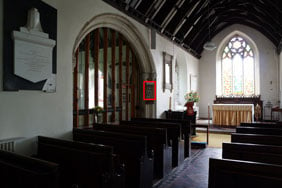
To compare noise levels under real-life conditions, I shot this scene with the Sony A3000, the Canon EOS T5 / 1200D, and the Nikon D3300 within a few moments of each other using their best quality JPEG settings at each of their ISO sensitivity settings.
All three cameras were fitted with their respective 18-55mm f3.5-5.6 kit zooms and were adjusted to provide the same vertical angle of view.
For this test all three cameras were mounted on a tripod and image stabilisation was turned off. Noise Reduction was set to the default options on each camera, although I disabled any automatic contrast-enhancing modes as these can artificially introduce noise. As such, Auto Lighting Optimizer on the Canon, Active D-Lighting on the Nikon and Auto DRO on the Sony were disabled.
The image above was taken with the Sony A3000. The A3000 was set to Aperture Priority mode and at its base 100 ISO sensitivity setting with the aperture set to f5.6 metered a shutter speed of 0.4s . Both the Canon EOS T5 / 1200D and Nikon D3300 were also set to 100 ISO and f5.6 and both metered the same 0.4s shutter speed. So you’re looking at like for like here.
Just to recap that the sensors in the Sony A3000, Canon EOS T5 / 1200D and Nikon D3300 have resolutions of 20, 18 and 24 Megapixels respectively, so the crop areas and size of detail varies accordingly. As you’d expect, all three models produce very good results at the lower end of the sensitivity range. It’s difficult to see much of a difference between them, but the Nikon D3300 100 ISO crop looks a little bit cleaner than the other two to me.
There’s a clear difference between the 100 ISO and 200 ISO crops, with the noise ramped up by an equivalent amount on all three, so the D3300 crop is still looking a little better than the other two here. It’s the same story up to the 800 ISO mark, but the small advantage the Nikon D3300 enjoys is fairly marginal – you be unlikely to see a difference unless pixel peeping. And by 1600 ISO the margin looks like it may have diminished to zero, at this setting all three look more or less the same.
Even in the upper end of the sensitivity range, it’s difficult to spot much of a difference in the noise levels. The T5 / 1200D’s saturation is dropping off and there’s more colour noise in the T5 / 1200D 12800 ISO crop than in the D3300. And the 12800 ISO crop from the Sony A3000 is looking very fuzzy compared with the other two. Where the T5 / 1200D tops out at 12800 ISO, the D3300 offers an additional 25600 position though the noise is overwhelming. The same could be said of the A3000’s 16000 ISO upper limit. All the same, these are worth having for emergency low light shooting where a very noisy shot might be better than an underexposed one.
But what happens when you bypass their default in-camera styles and process their RAW data with the same settings? Find out in my Sony A3000 RAW noise comparison, or head straight over to my Sony A3000 sample images to see some more real-life shots in a variety of conditions.
|



































